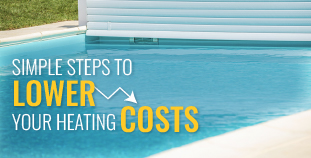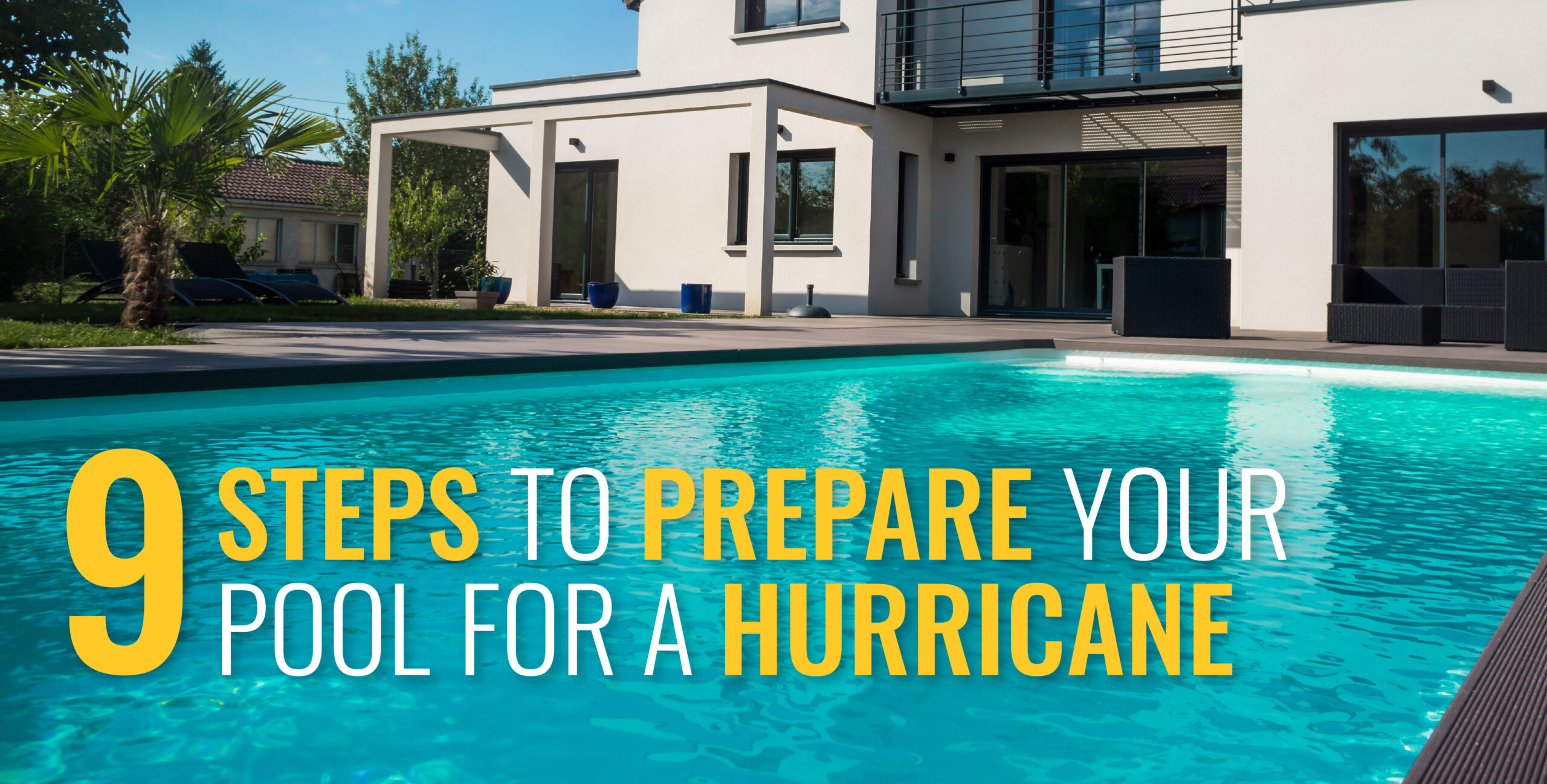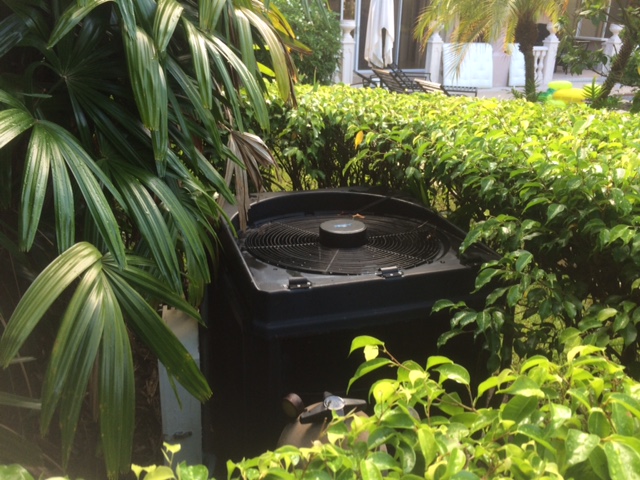As hurricane season approaches, it's crucial to ensure the safety of your property, including your…

Lower Swimming Pool Heating Costs With These Simple Steps
Customers often come to us and ask how they can make their swimming pool more energy efficient. This is a great question, especially considering how rough the economy has become recently. In this article, we explain a few ways you can easily reduce your heating costs.
- Select the right heater for your pool: Some heaters have higher upfront costs and lower maintenance costs. Other heaters have lower upfront costs and higher maintenance costs. Learn more about different types of heaters here.
- Take advantage of solar heating: By pairing solar panels with your heater, you can drastically reduce your heating costs. Solar panels have minimal operating costs, are environmentally friendly, and give you access to free heat!
- Run your pool pump when you turn off your heater: When your pool pump is running, the pool water is constantly circulating and has a consistent temperature throughout the swimming pool. In contrast, when your pool pump is not running, warmer water rises to the top of the pool while colder water sinks to the bottom. The surface temperature will be higher when your pool pump is not running. This layering of water temperatures accelerates heat loss from the pool.
- Use a solar cover when you do not use your pool: We always suggest solar covers to our customers because they drastically reduce swimming pool heating costs. 75% of a swimming pool’s heat loss is due to evaporation. A solar cover minimizes evaporation by acting as a barrier between the pool water and the air. In fact, by using one, you can reduce your swimming pool heating costs between 50-70%. Learn more about solar covers here. If you want an alternative option to a solar cover click here to learn about Aqua Blanket, a liquid pool cover.
- Maintain your heater correctly: Maintain appropriate water temperatures when your pool is in use , 78° to 80°F (26° to 27°C) for active swimming and 80° to 82°F (27° to 28°C) for recreational swimming. Lower the water temperature when your pool is not in use. By lowering your water temperature 1°F (0.6°C), you can save 10% to 30% in heating costs per month.
By following any of these tips, you can have the best of both worlds: lower swimming pool heating costs and a heated swimming pool. How do you keep your swimming pool heating costs down? Leave your thoughts in the comments section below!




I need to know the Minimum RPM the AquaCal Heat Pump will operate. I have a Pentair Intelliflo VS+SVRS Pool Pump. Could you please help?
Thank you,
Glenn Anderson
Hi Glenn,
AquaCal heat pumps typically require at least 30 GPM to operate. For most variable speed pumps, that means the RPM’s need to be above 2000 RPMs. If you have any questions, please call us at 727-823-5642.
Thanks,
AquaCal Tech Support
DPC – Defroat Sensor Failure .. where can I get a sensor replacement ? dan.micu@live.com
Hi Daniel,
The replacement part number is probably ECS6105, but we would need the heat pump model number to be sure. Please call us at 727-823-5642. We can verify the part number and offer dealers where you can purchase the part.
Thanks,
Mark H.
Those were some amazing information. This helps me so much to understand some useful thing.
Thanks Christina!!
Good blog post. I was just looking for ways to make my pool heating last longer and this is the information I need!
Thanks Adam!
Glad you found this useful.
Hello. I am heating my pool which started out at 50°. Can you settle a dispute I am having. The water temperature increased by 5° over the first hour. Should I expect slightly larger or slightly smaller or equivalent increases in temperature over subsequent hours? Thank you
Good Evening Mr. Bennett,
Hope you are doing well. Most heat pumps when well sized correctly will heat a pool about 1 degree per hour. I would say that 5 degrees withing one hour is unusual unless there were other site conditions that caused this. I would watch the temperature rise & if you are getting 1 degree or more per hour, then everything is running fine.
Please feel free to call us at 727-823-5642 with any questions.
Thanks,
Robert Brown
Aquacal Tech Support
Thanks for mentioning that I’ll want to have a lower water temperature when I’m not using my pool. I love to swim, so I’ve really been thinking about getting a pool. This will definitely help me find a great pool heater. Where can I learn more about solar heaters?
Hello we live in nh and have a heat pump and it was working fine. We recently put a concrete artificial rock formation over the equipment. We had 78 degree temperatures it’s only 48 degrees in the structure but we cut a side panel and vent on the heat pump side. We had the heater off for a week due to construction put it back on this morning 12 hours. The pool temp is 78. Any suggestions or recommendations?
Hello Patrick,
We do not recommend you put the heat pump in an enclosure. A heat pump needs good ventilation around and above it to operate properly. Please call us at 727-823-5642 if you have any questions.
Thank you for your useful information. It really helped me a lot. I’ve been looking for a way to save energy in my swimming pool. I will try it according to your method.
Hi Ronald,
Glad to hear you found this information helpful.
Hi,
I have an ecostar hayward variable speed pump and an aquacal super quiet heat pump. As you suggest, I want to run my pump at night with the heater off and I can do so at very low rpms just for filtration to save energy. My question is , will it happen automatically that the heater will shut off because off the low rpm and turn on when the RPM is set with a timer to go up during daytime? Will the heat pump detect all of this automatically and turn on and off without entering into some error mode or causing damage to the heat pump?
thank you
Hi Israel,
You will need to do a test to find out how the heat pump reacts at very low rpms. If you see the message “FLO” at very low rpms, the heat pump will turn on and off as your rpms change. If the unit tries to run at very low rpms, it will probably start showing an “HP” error message and eventually will shut off showing “HP5” If “HP5” shows up you will need to power the unit down and back up to clear the message. If you have any questions please call us at 727-823-5642.
Do you have gas as a heater? My pool Man has been in today and said he was having the gas man coming to put the gas in my aqua cal machine and I said what gas? I have had aqua cal”s since 1988 and it is the first I’ve heard of gas.
Hello Marillyn,
Your heat pump is similar to an air conditioner and there is refrigerant inside the unit. We do not manufacture natural gas or propane gas heaters.
I just purchased Home and we have a aqua cal. There is an old oil tank around it but looks to be old. Would the heater require oil?
Hi Steven,
An AquaCal heat pump does not required oil to operate. Heat pumps use refrigerant, like your air conditioner, to transfer heat.
Hi. I have a new install of a AquaCal SQ166. The unit is not going into freeze protection mode and Defrost Mode. As a result the unit is freezing the coil. I have tested the unit ability to go into defrost mode at temperatures ranges from 35, 40, 45, 50 degrees and unit does not prevent coil freezing. I purchase the unit specifically because of its ability to operate at near 20 degrees and it is not functioning anywhere close to this temperature. I suspect the defrost temperature sensor is not functioning properly. I less suspect a calibration at this point. Please note that I can operate the unit properly at 50 plus degrees with no problems should I chose too. I also have a 350,000 gas unit to supplement heating. Please note that I clearly understand the efficiency of the unit as the temperature lowers. However, I’d would like to insure that the SQ166 operates properly, and somewhere near or at 20 degrees. What do you recommend as the next step in the resolution of this problem.
Hello Andre,
Please call us at 727-823-5642 to discuss.
Thanks
Do you have a write-up procedures for winterizing my heat pump, model 120ARDSBMN I have been closing my pool for over 20 years, but when we moved and had a pool put in last year, we purchased one of your heat pumps. We live in Pa. so it is obviously important that i flush out the pump properly for the winter months. Thanks
Having your heat pump clean and checked for peak performance will also maximize efficiency.
thanks for the blog! Explained well about maintaining swimming pool heat pumps. Very helpful tips to get more benefits.
Thank you for your feedback Gaj, please feel free to read some of our other blogs to get more information!
Choosing the right type of pump is important and factors such as the size of your pool, type of filtration and sanitation system, and how often it’s used should be considered. Installing the best pump for your pool will ensure that your pool runs at its best – this means easier maintenance, lower energy costs and longer equipment life.
Thank you very much for your comment Calmet, it is appreciate it.